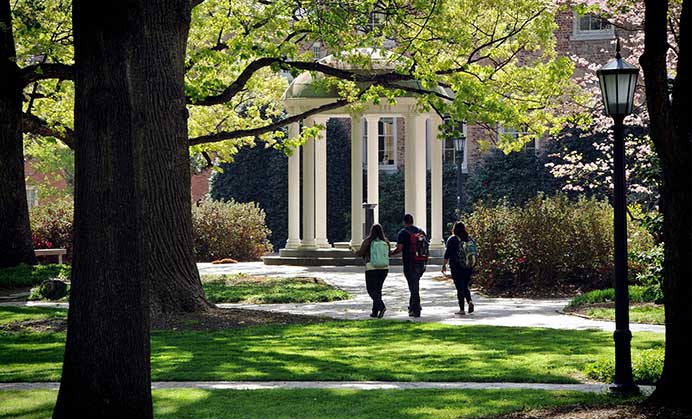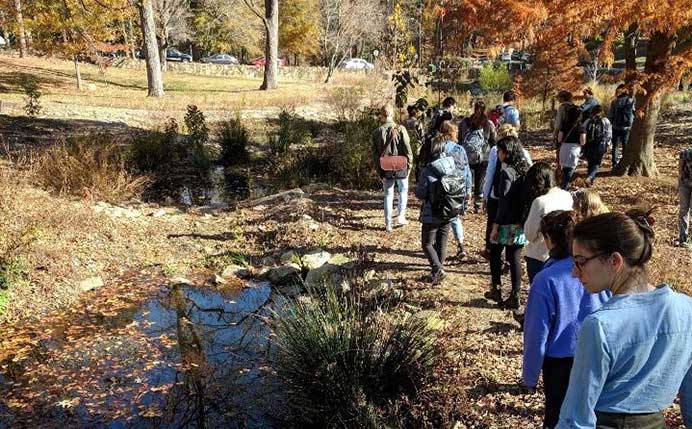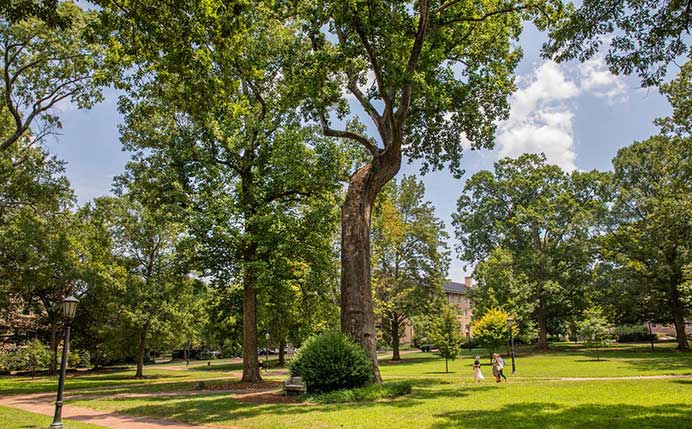Campus North

Campus North is the historic origin of the campus where the University was founded in 1789, broadly defined as areas north of Manning Drive and south of Franklin Street. Campus North traverses a ridge that is oriented generally east-west, a prominent feature of the local topography. Many buildings that are important to the University’s character and history are located here such as South Building, Old East and Old West, as well as student amenity spaces such as the Frank Porter Graham Student Union, Robert B. House Undergraduate Library, and the Pit. Campus North is the primary interface between the campus and the Town of Chapel Hill.
There are numerous open space areas that link to the area’s ecological and historical identity. These include McCorkle Place and the Old Well, Polk Place, Coker Arboretum, Battle Park and Forest Theatre, Kenan Woods, and the quads between residence halls and other academic buildings. These places are both beautiful and important as natural areas where nature and people interact. There are also large facilities and developed areas in Campus North such as Hooker Fields, Kenan Stadium, Boshamer Stadium, and the Central Campus Athletic Complex, which have mature trees and open space adjacent to them.
Ecological Assets
Campus North is on a plateau at the head of several watersheds, including one to the north and the other to the east. Topography falls north and east with Kenan Stadium nestled within the head of the eastern watershed. Rams Head Recreation Center and Chase Dining Hall share the same relationship to the watershed. The size and beauty of Campus North’s mature tree canopy are a commanding visual reminder of the ecological context of the campus.
Recently, the University has invested in a range of green infrastructure interventions on Campus North that have focused on stormwater management and ecological restoration to help meet regional watershed treatment goals and permitting requirements. Examples include the Battle Grove regenerative stormwater conveyance system, rainwater cisterns at the FedEx Global Education Center and the Genome Central Park, and green roofs at the FedEx Global Education Center and Carrington Hall.
Trees are an integral ecological asset that define Campus North. Over 100 heritage trees—those with exceptional historical, cultural or aesthetic value—are located throughout Campus North. A mixture of mature primarily native tree species are a defining characteristic of McCorkle Place which includes trees that date back to the founding of the campus. A tree protection program and guidelines contribute to a long-term commitment to protect, preserve, and enhance the mature tree canopy on Campus North and campuswide.


